In principle there is always the option to set custom labels via plt.gca().yaxis.set_xticklabels().
However, I'm not sure why there shouldn't be the possibility to use matplotlib.ticker.FuncFormatter here. The FuncFormatter is designed for exactly the purpose of providing custom ticklabels depending on the ticklabel's position and value.
There is actually a nice example in the matplotlib example collection.
In this case we can use the FuncFormatter as desired to provide unit prefixes as suffixes on the axes of a matplotlib plot. To this end, we iterate over the multiples of 1000 and check if the value to be formatted exceeds it. If the value is then a whole number, we can format it as integer with the respective unit symbol as suffix. On the other hand, if there is a remainder behind the decimal point, we check how many decimal places are needed to format this number.
Here is a complete example:
import numpy as np
import matplotlib.pyplot as plt
from matplotlib.ticker import FuncFormatter
def y_fmt(y, pos):
decades = [1e9, 1e6, 1e3, 1e0, 1e-3, 1e-6, 1e-9 ]
suffix = ["G", "M", "k", "" , "m" , "u", "n" ]
if y == 0:
return str(0)
for i, d in enumerate(decades):
if np.abs(y) >=d:
val = y/float(d)
signf = len(str(val).split(".")[1])
if signf == 0:
return '{val:d} {suffix}'.format(val=int(val), suffix=suffix[i])
else:
if signf == 1:
print val, signf
if str(val).split(".")[1] == "0":
return '{val:d} {suffix}'.format(val=int(round(val)), suffix=suffix[i])
tx = "{"+"val:.{signf}f".format(signf = signf) +"} {suffix}"
return tx.format(val=val, suffix=suffix[i])
#return y
return y
fig, ax = plt.subplots(ncols=3, figsize=(10,5))
x = np.linspace(0,349,num=350)
y = np.sinc((x-66.)/10.3)**2*1.5e6+np.sinc((x-164.)/8.7)**2*660000.+np.random.rand(len(x))*76000.
width = 1
ax[0].bar(x, y, width, align='center', linewidth=2, color='red', edgecolor='red')
ax[0].yaxis.set_major_formatter(FuncFormatter(y_fmt))
ax[1].bar(x[::-1], y*(-0.8e-9), width, align='center', linewidth=2, color='orange', edgecolor='orange')
ax[1].yaxis.set_major_formatter(FuncFormatter(y_fmt))
ax[2].fill_between(x, np.sin(x/100.)*1.7+100010, np.cos(x/100.)*1.7+100010, linewidth=2, color='#a80975', edgecolor='#a80975')
ax[2].yaxis.set_major_formatter(FuncFormatter(y_fmt))
for axes in ax:
axes.set_title("TTL Distribution")
axes.set_xlabel('TTL Value')
axes.set_ylabel('Number of Packets')
axes.set_xlim([x[0], x[-1]+1])
plt.show()
which provides the following plot:

 ]
]
